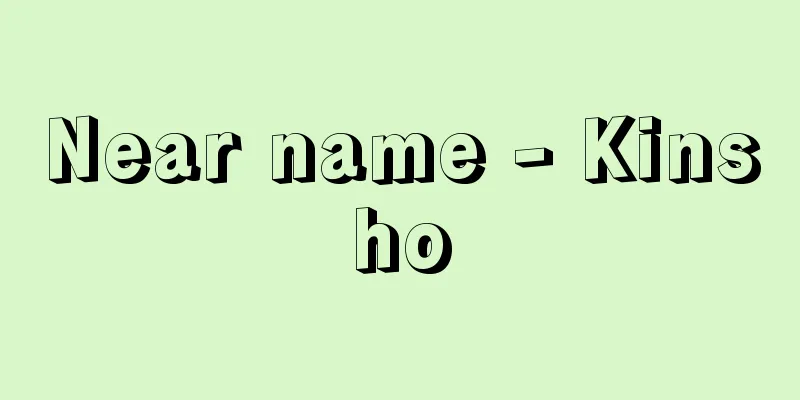Near name - Kinsho

|
〘Noun〙 In grammar, it is a way of referring to the "ko" part of the three categories of demonstrative pronouns, "ko," "so," and "a." It refers to things, places, and directions on the speaker's side, or on the "we" side that includes the speaker. In colloquial speech, it is used as "kore," "kotsu," "koko," and in literary speech, it is used as "kore," "koko," and "konata." Proximate pronoun. → Distant, middle, and indefinite. [Grommet Instruction (1889)] Source: The Selected Edition of the Japanese Language Dictionary About the Selected Edition of the Japanese Language Dictionary Information |
|
〘名〙 文法で、指示代名詞のコ・ソ・アの三区分のうち、コにあたるさし方。相手に対して話し手のがわ、または相手を仲間に入れた「われわれ」のがわの、事物、場所、方向についてさす。口語では「これ・こいつ・ここ・こちら」など、文語では「これ・ここ・こなた」など。近称代名詞。→遠称・中称・不定称。〔語法指南(1889)〕
出典 精選版 日本国語大辞典精選版 日本国語大辞典について 情報 |
Recommend
Goryokaku
The remains of Japan's first and largest West...
Paddlefish - Paddlefish (English spelling)
A freshwater fish belonging to the order Acipense...
Székesfehérvár - Székesfehérvár (English spelling)
The capital of Fejer County in central-western Hu...
Spice - spice (English spelling)
In Japan, it is translated as "spices" ...
anode
In a battery or electrolysis, a reaction occurs a...
ISDN - Inter-Network
Abbreviation for integrated service digital netwo...
Phimai Temple - Phimai Temple
The ruins of a Khmer temple in Phimai, 270 km nort...
Daimyo Mansion
These were houses given to feudal lords who went ...
Japanese food
...This refers especially to the style that was s...
pouvoirs constitués
...the term used to distinguish the power to crea...
Origenism - Origenism
…In 250, he was imprisoned during the persecution...
Guido da Siena - Guido da Siena
…The origins of Sienese painting lie in the minia...
Sei
Name of a Chinese country. [1] One of the feudal s...
Kazuo Aoki
1889-1982 A bureaucrat and politician from the Ta...
Gregory [I] - Gregory
Pope of the Roman Empire (reigned 590-604), Doctor...









